What Is Silk Road? (Info, History, Map, Countries)
The Silk Road, also part of the ancient Silk Road network, served as a crucial trade route linking the East and West, facilitating not only the exchange of goods such as silk, spices, and precious metals but also the transfer of culture, religion, and technology. The Silk Road has been among the most popular extensive routes in the world throughout history, and its title is mentioned in many textbooks. Even hotels, commercial companies, and restaurants in Iran have given their brand name as The Silk Road. Stretching through various significant cities like Tehran, Isfahan, and Tabriz, the route displays Iran’s historical significance in global trade.
However, our general knowledge regarding the Silk Road is likely limited to the fact that this route was a bridge between Iran and China in the past and played an essential role in the trade and cultural exchanges of these two countries. But the history of the Silk Road is more expansive than we think. Here, we provide you with full information on the famous Silk Road.
About Silk Road
The Silk Road is a network of interconnected roads that were built in the past for the purpose of trade between Asian countries. This road connected East and West and South Asia and also connected Asia to North Africa and Eastern Europe. The Silk Road was known as the largest trade network in the world for 1700 years until the 15th century.

For many years, this route was introduced as the most substantial route in the world. The reason for its high importance, in addition to making trade between countries, kingdoms, and empires possible through the Silk Road, not only were goods exchanged between countries, but also many intellectual and religious beliefs of different nations, from Islam to Christianity, Buddhism, and Hinduism, were introduced between people, as well as the people of the countries.
Through the existence of the Silk Road, people were informed about the prevailing conditions in other neighboring countries. At that time, by connecting different nations, the Silk Road led to the growth of ideas and inventions and ultimately produced unique products, and as a result, many countries became advanced and independent.
Silk Road History
Where was the Silk Road? The Silk Road was established in the first century BC by the Han Dynasty in China. At that time, this road started from China, and after passing through Afghanistan, Uzbekistan, and Iran, it continued to Alexandria, Egypt.
According to Chinese sources, “Wu,” the emperor of China, sent a person named “Zhang Qian,” a court eunuch, in 138 BC to discover unknown lands to the west of China. He went on a journey with his slave, and after passing through Gansu province, he reached areas in Central Asia.
Zhang Qian spent a decade in Central Asia, carefully examining the economic and social situations of the local inhabitants. The lands were in the hands of the Huns (nomadic people who lived in Central Asia, the Caucasus, and Eastern Europe) at that time. After a thorough investigation, he fled to his country via Ferghana, now in Uzbekistan.
He then gave the Chinese court the reports prepared from the communication routes of the Huns. The result of his research was China’s encampment in the western lands. The Chinese created a trade route that connected China with the West by conquering Central Asia. This established the ancient Silk Road, which facilitated trade between China, the Parthian Empire, India, and Rome.
From the first century BC to the second century AD, the Silk Road extended along the countries of “China” in East Asia, “Kushan” in Central Asia and North India, “Persia” in West Asia, and “Rome” in Europe. This commercial communication highway was not always open due to the outbreak of war and the settlement of different ethnic groups due to the political pressures of the neighboring nations.
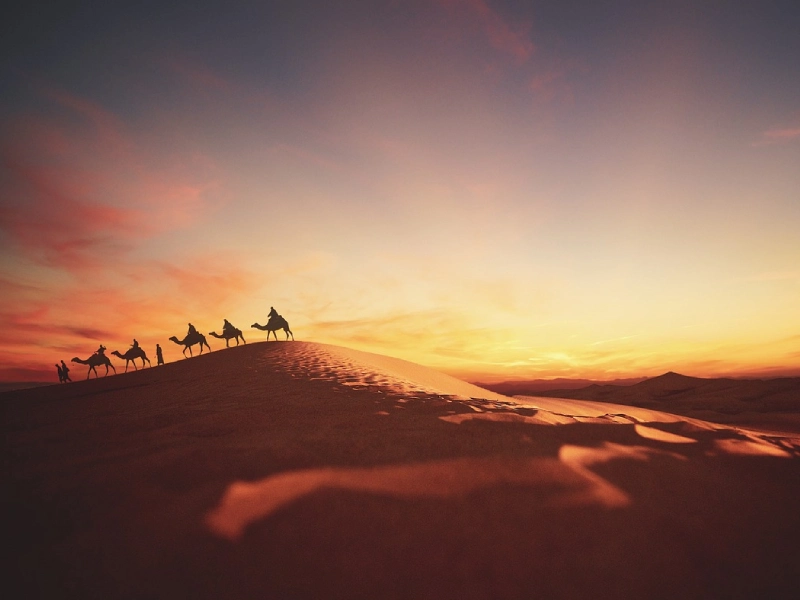
The Parthians (a major Iranian political and cultural power) did not allow these ethnic groups to cross the road to compete with Rome.
Obstacles persisted due to government policies, sometimes hindering trade. The Silk Road discovery finally removed these barriers.
The trade of the Silk Road became very popular among European merchants in the 13th century. The nature of this route, with the discovery of direct sea trade routes, connected European merchants with manufacturers in China and eliminated the role of middlemen in this economic and trade route.
The Birth of the Mongolian Empire
With the formation of the Mongol Empire, from the 12th to the 13th century, the trades of the Silk Road fell into the hands of the Mongols. The empire made a lot of profit during this period. Marco Polo’s family engaged in extensive trade with the Mongols during this era and gained renown as the foremost merchants at the Mongol court with Europe.
Following the decline of the Mongol Empire, control of the Silk Road trade passed into the hands of the Sogdians. The Sogdians, who were of Iranian descent, established themselves in the trans-Nahar region in Central Asia (which corresponds to present-day Uzbekistan and Tajikistan). They organized caravans and journeyed from China to Central Asia and Iran.
The Sogdians were Iranians who settled in the trans-Nahar region in Central Asia (present-day Uzbekistan and Tajikistan). They formed a caravan and traveled from China to Central Asia and Iran.
Silk Road in Iran
The Silk Road was built at the same time as Mehrdad I Parthian kingdom in Iran. With the establishment of this road, extensive economic relations were formed between the Parthian Empire and the Chinese Empire.
In 115 BC, Mehrdad II welcomed the Chinese trade delegation for the first time and signed a treaty with the Han Empire. In this agreement, there was an emphasis on the provision of facilities in international trade affairs, and a strong role was considered for Iran as a transit country.
During the Sassanid period, the Silk Road trade in Iran thrived, bringing considerable wealth to the Sasanian Empire through the exchange of goods. Levying customs duties on caravans was a major source of income for the empire. This business continued in later periods as well, but its prosperity was not as successful as the time in the Sasanian era.
Why Was the Silk Road Known by This Name?
From the 2nd century to the end of the 14th century AD, there was a major trade route from the east to Chang’an (present-day Xi’an in China) and reached Paban in the western part of the Mediterranean. This is how China was linked to the Roman Empire.
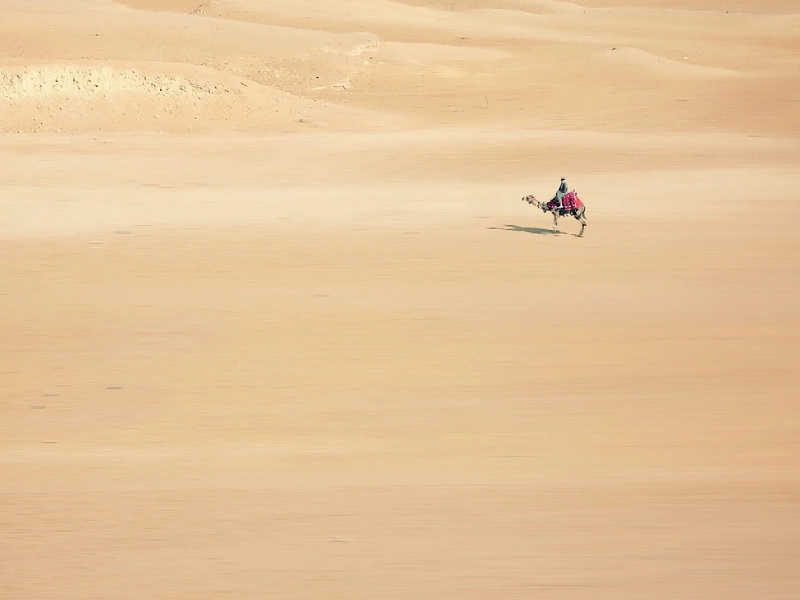
Since China had been the largest exporter of silk at the end of the ancient road, in 1877, Ferdinand von Richthofen, a prominent German traveler, geographer, and scientist gave the name “Silk Road” to this popular and busy trade route.
In addition, Marco Polo, the European explorer, also traveled along the Silk Road route and provided unique explanations about the route and the goods that were transported on the Silk Road, but he never gave a name to the road.
Where Did the Silk Road Start and End?
The Silk Road crossed many lands that were known as the Silk Road Countries. It was like a chain, each route linking different countries such as China, India, Kyrgyzstan, Kazakhstan, Tajikistan, Uzbekistan, Turkmenistan, Iran, Azerbaijan, Georgia, Armenia, Turkey, Egypt, Africa, Greece, Rome, and England. The Silk Road passed through 40 countries in the modern world and connected several continents.
The Silk Road route started from the city of Dunhuang in China, continued towards the state of Gansu, and passed through present-day Eastern Turkestan located in Kazakhstan and Central Asia. Through the Bish Baligh route, it reached Samarkand and Bukhara in Uzbekistan, the city of Almaliq, a medieval city in China along the Kazakhstan border, and Atarar, or by its current name today Farab or Otrar.
The main route of the Silk Road started from the Joveyn province of Neyshabur, Mary City in Turkmenistan, Tous City, Sarakhs County, Gorgan, Bam, and Safiabad, and Khorasan to Ray City in Tehran province, and from Ray, it reached Qazvin and Zanjan and the north of Hamedan province.
Later, the Silk Road went from Kabudar Ahang city to the north side of this same city, near Qoli Yaba Mountain, Ardabil, Tabriz, and Yerevan (the capital of Armenia), and from Yerevan, it led to Erzurum and Trabzon (cities in Turkey).
The sub-section of this road led from Samarkand to Khwarazm or Chorasmia, from Khwarazm to Sarai (the capital of the Golden Mongol army) and Hashtarkhan (a city and port in the southeast of European Russia), and from there to the banks of the Dan River and the northern ports of the Black Sea.
Silk Road Route in Iran
The Silk Road in Iran starts from Khorasan Province from the east-west axis and reaches ancient Ray city from the cities of Tous, Neyshabur, Sabzevar, Shahroud, Damghan, Semnan, and Ray, which was a big city. It goes to Qazvin, and from there, it divides into two branches.
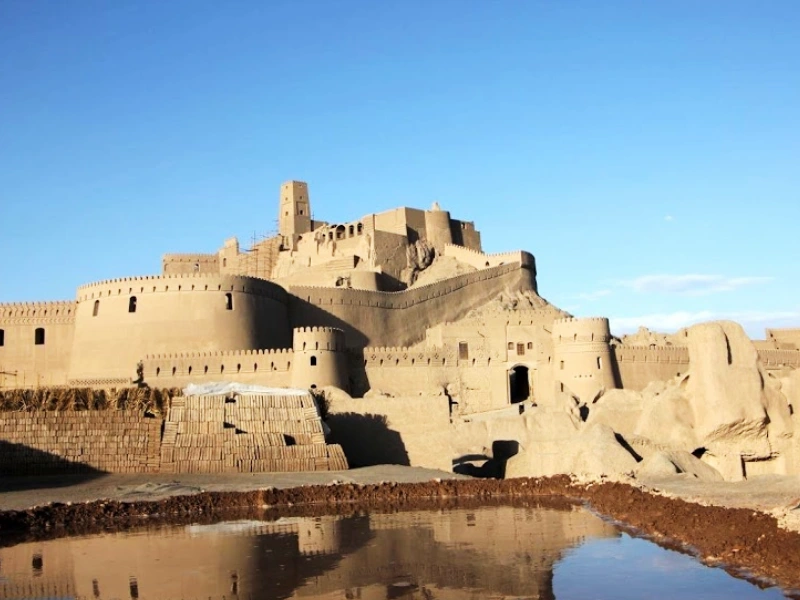
From Qazvin, the Silk Road is divided into two separate routes. The road had a way to the northwest, namely the cities of Sarab, Tabriz, and Khoi, and from there, it would reach Iran’s borders and lead to the neighboring country. The other way is to the west, that is, to Hamadan and Kermanshah, and from there again, it passes through Iran’s borders.
In addition to the routes mentioned above, there were other minor routes in Iran that the Silk Road crossed and even connected Iran to other countries of the world through the Persian Gulf.
What Was Traded on the Silk Road?
In the trade relations between Iran and China during the Parthian period, onions and saffron were exported from Iran to China, and in return, peaches, apricots, and silkworms were brought from China to Iran. After that, they used this road to transport precious goods such as precious stones, silk, and spices to the West. The most goods transported on this road were silk. For this reason, its name remained on the road.
From the 7th to the 9th century, trade between China and Western countries through the Silk Road was significantly boosted. In this period, birds, rare animals, pearls, glassware, gold and silver coins, food, musical instruments, and Western and Central Asian clothes were imported to China, and Chinese silk, papermaking and printing techniques, porcelain, gunpowder, and compasses were imported from this country.
The export of different goods to other countries helped advance global civilization. The Silk Road also had cultural impacts, allowing the exchange of religious ideas between the East and the West. For example, it played a key role in the development of Buddhism, turning Buddha’s teachings into a comprehensive belief system.
How Long Was the Silk Road?
The Silk Road, a historical trade route dating back to ancient times, spanned over 6,400 kilometers (4,000 miles), making it one of the oldest and longest trade routes in the world. This major route facilitated the exchange of goods, ideas, and culture between the East and the West, playing a significant role in the development of civilizations along its path.
Ancient Silk Road Map
The Silk Road map illustrates a vast network of routes that extended from China in East Asia, across Central Asia, and into Europe, with endpoints reaching as far as the Mediterranean in the West. Spanning the continents of Asia and Europe, key countries along the Silk Road included China, India, Persia (modern-day Iran), and several regions within present-day Turkey and Europe.
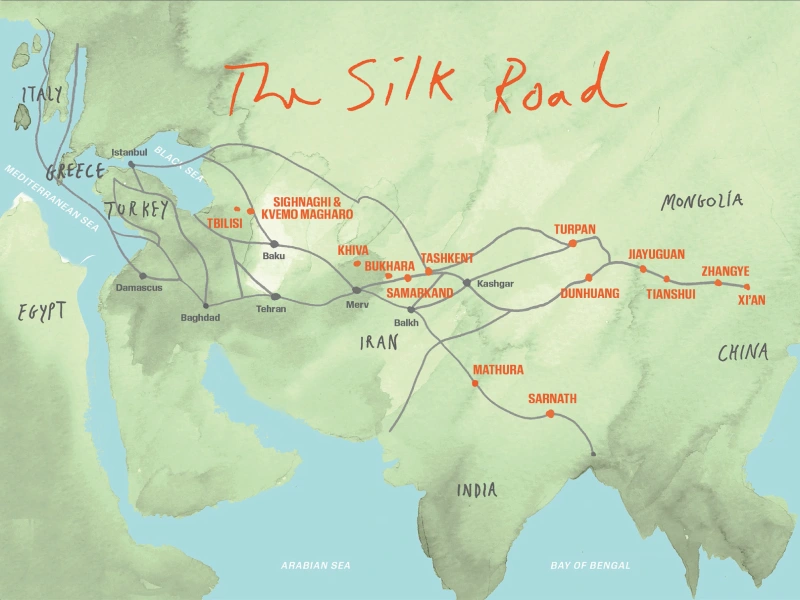
Final Word
The Silk Road was considered the most important route in the world until the 15th century. This road not only made the transfer of goods possible but also caused the transfer of intellectual beliefs such as Islam, Hinduism, Buddhism, and Christianity. Moreover, diseases such as the plague were also spread through this route.
The Silk Road was the main source of trade for many countries, including Iran. In recent years, Iran has sought to revitalize this route by enhancing infrastructure and promoting tourism along this historic pathway, aiming to leverage its geographic position as a modern trade hub.
Are you planning to travel to Iran and looking for an Iran resort? Consider Matinabad Eco-resort.

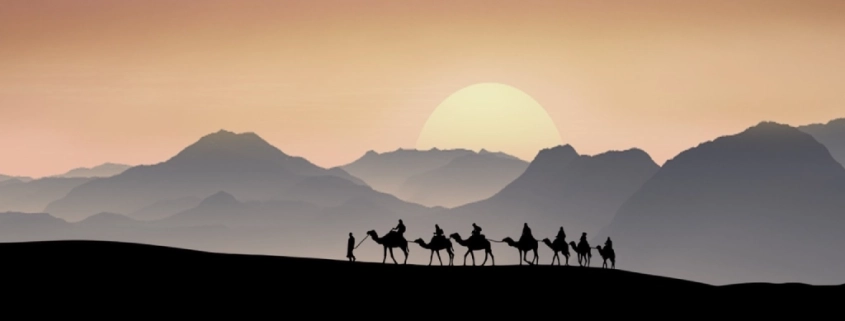



Leave a Reply
Want to join the discussion?Feel free to contribute!